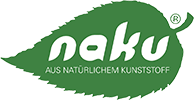Detecting counterfeit organic bags – NaKu clarifies
Video content “Detecting counterfeit organic bags”
The video content on the topic of “Identifying counterfeit organic bags”: There are currently an increasing number of counterfeit organic bags appearing on the Austrian market that are declared to be biodegradable plastic, but in reality are not – a clear and deliberate deception! Here, companies and ultimately consumers are being duped. The bags declared as biodegradable are usually made of polyethylene, a significantly cheaper raw material for the production of bags made from petroleum. As you will see in the video, the biodegradability of the bags is deliberately pointed out, but there is no corresponding certification for this. However, genuine organic bags approved for trading require a certificate such as the OK compost seal from TÜV Austria. But here too you can unfortunately be deceived, because there are even bags with fake TÜV seals.
Why are real organic bags made from renewable raw materials actually counterfeited? Conventional plastic bags made from petroleum have been banned by law in Austria since January 1st. However, biodegradable organic bags with a certain material thickness are still permitted. The production of real organic bags is more expensive than the conventional production from petroleum.
When counterfeit organic bags are on the market, it is difficult for consumers and retailers to tell them apart from the real ones, since they understandably trust the label on the bags. We have therefore created a tutorial for the self-test at home. With three very simple methods, anyone can find out very quickly whether the tested bag is made of biodegradable bioplastic or just conventional plastic and is therefore counterfeit or incorrectly declared.
The test methods for detecting counterfeit organic bags
First test method
A conventional plastic bag made of polyethylene produces a rather tinny and loud noise when rustling. Sacks made of real bioplastic sound quieter and duller.
In terms of feel, real and counterfeit bags differ in that polyethylene (counterfeit bags) feels slightly stiff and somewhat greasy. In comparison, bags made of bioplastics feel very velvety and pleasantly soft.
Second test method
The result of the second test method is particularly clear. Because polyethylene (fake bags) has a slightly lower density than water, but bioplastic has a higher density. The two bags can easily be dipped in water. Natural plastic bags will sink in water, but the polyethylene bag will float. To make the result clearer, it is best to add salt to the water to increase the density of the water. Soap or dishwashing detergent can also be added to reduce the surface tension of the water, making the plastics being compared easier to submerge. You just have to be careful not to submerge any air bubbles. Tip: Do not dip whole bags, but cut small pieces out of the bags to be tested and then dip them in the water.
Third test method
The third test method for detecting counterfeit organic bags is the burn test. However, caution is advised when using the burning method because plastic burns well. It is best to carry out this test outdoors and on a fireproof surface. Danger! When lighting, hot drops may fall. In polyethylene test pieces, these drops will even continue to burn. With natural plastic, however, black pieces of soot will remain.
The flame of the two plastics is different. Polyethylene has a strong yellow and sooty flame, bioplastics burn less intensely and the flame is less yellow and also less sooty.
You will also notice differences in smell. Polyethylene smells like candle wax and will give you that familiar burnt plastic smell. Bags made of bioplastics, on the other hand, smell natural when they burn, reminiscent of burnt caramel or popcorn.
